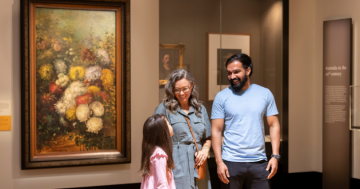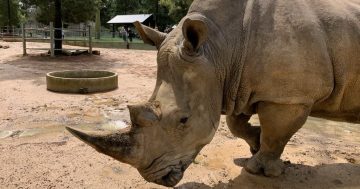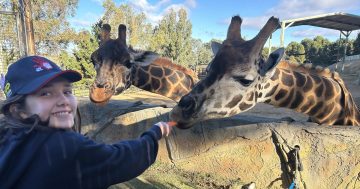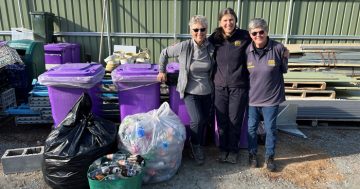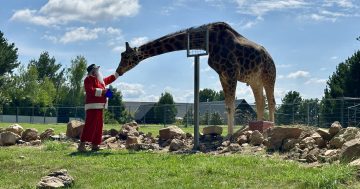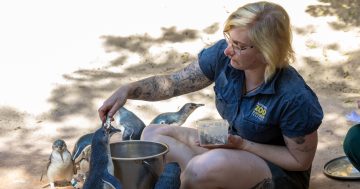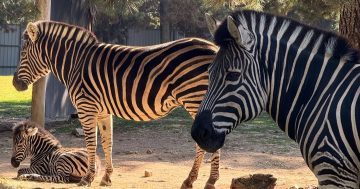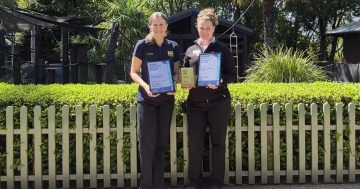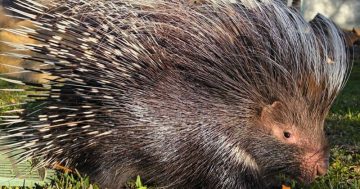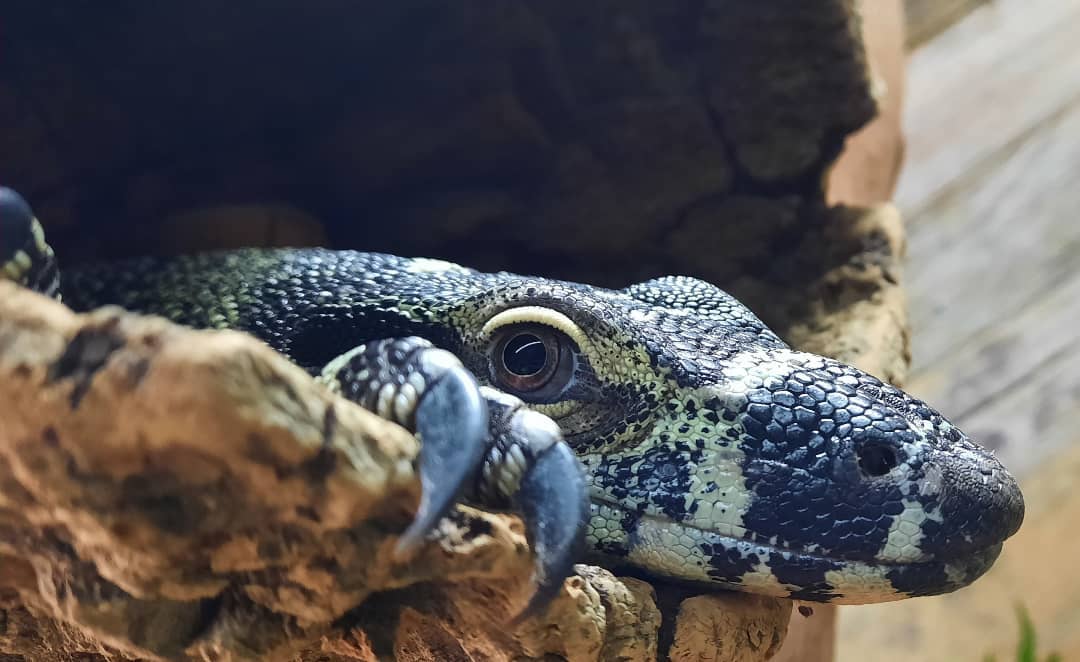
Look at those eyes! Azari the Lace Monitor is working hard to prove that reptiles deserve love, just like any other animal. Photo: Luke Dunn.
Plenty of kids want to be zookeepers when they grow up, but in the case of Luke Dunn, it really was meant to be.
Fascinated by animal behaviour, especially in uncommon and endangered species, he strived for a career surrounded by furred, feathered and scaled creatures.
A volunteer position got him started, and fast-forward about 15 years, Luke is living the dream as a full-time keeper with the National Zoo and Aquarium.
He specialises in reptiles. Snakes, lizards and turtles are his bread and butter.
“People tend to think reptiles are all instincts, no brain, and that they can’t be affectionate,” Luke says.
“Reptiles are generally solitary, so bonding with them can be a challenge, but it’s really rewarding. They are crazy smart. They recognise people they know and have distinct personalities.
“They’ve always captivated me. I wish more people gave them a chance.”
Raising reptiles in his own home has long been a favourite pastime for this keeper. One very special resident at the National Zoo is actually his ex-housemate.
Steve, the lace monitor, grew up with Luke, but as an almost two-metre-long adult, the lace monitor needed more space and enrichment than Luke could give him at home.
“Raising Steve will always be one of my greatest joys,” Luke says.
“I know him better than pretty much anyone. Like, how he loves the rain even though it slows him down. There’s a big tree in his enclosure that he keeps climbing to enjoy the water.
“If that doesn’t prove that lizards have personalities, I don’t know what will.”
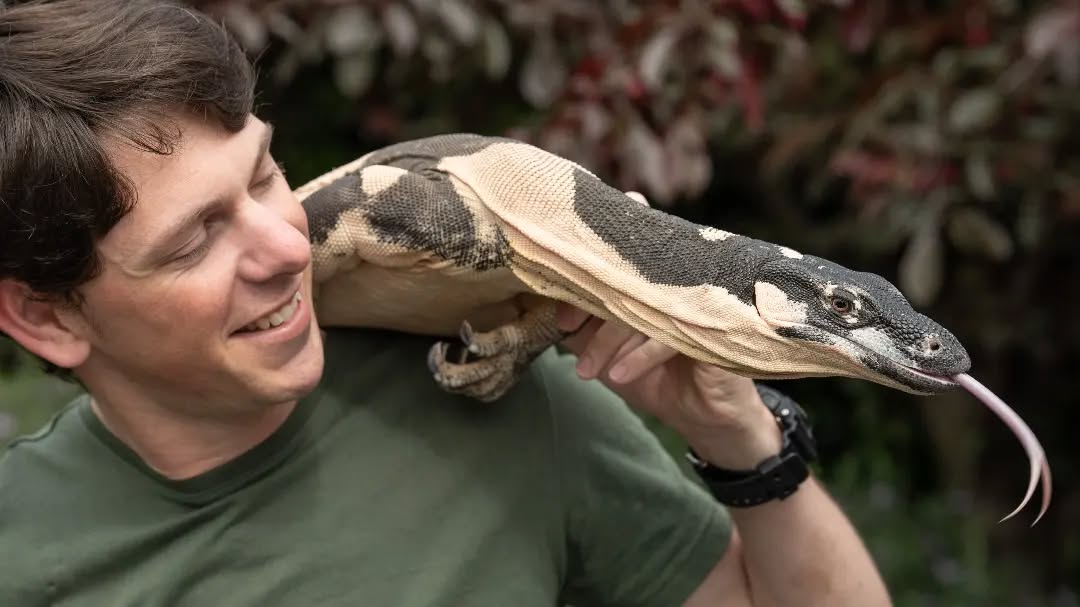
Luke is kind of like a surrogate dad to Steve, who greets the keeper enthusiastically almost every day. Photo: Luke Dunn.
Luke also enjoys spending time with the zoo’s two Indian star tortoises, which like all tortoises, are biologically classed as turtles.
“Turtles are generally very curious or very shy, rather than anything in between
“Our Indian star tortoises are brother and sister, both super inquisitive,” Luke says.
“We also have a pig-nosed turtle and a Coahuilan box turtle. If we’re working in or around their enclosures, they’re sure to come over for a sticky-beak.”
Other popular residents include herbivore Ralph, a rhinoceros iguana, and carnivore Ana, a southern green anaconda.
Luke describes Ralph as a bit of a grumpy guy with a big attitude and secret love for scratches. Ana, on the other hand, is said to be genuinely sweet despite her immense size and power.
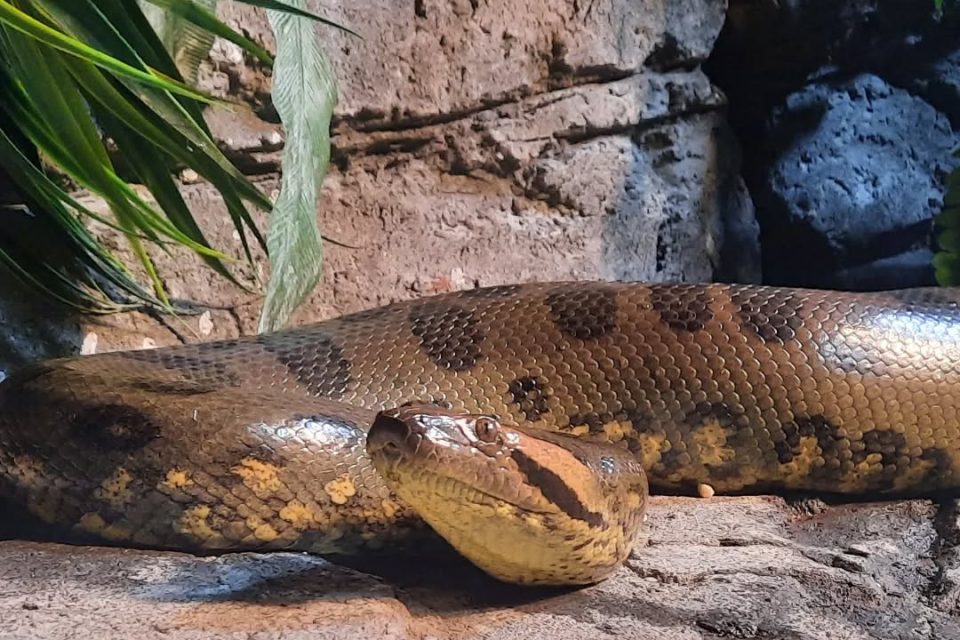
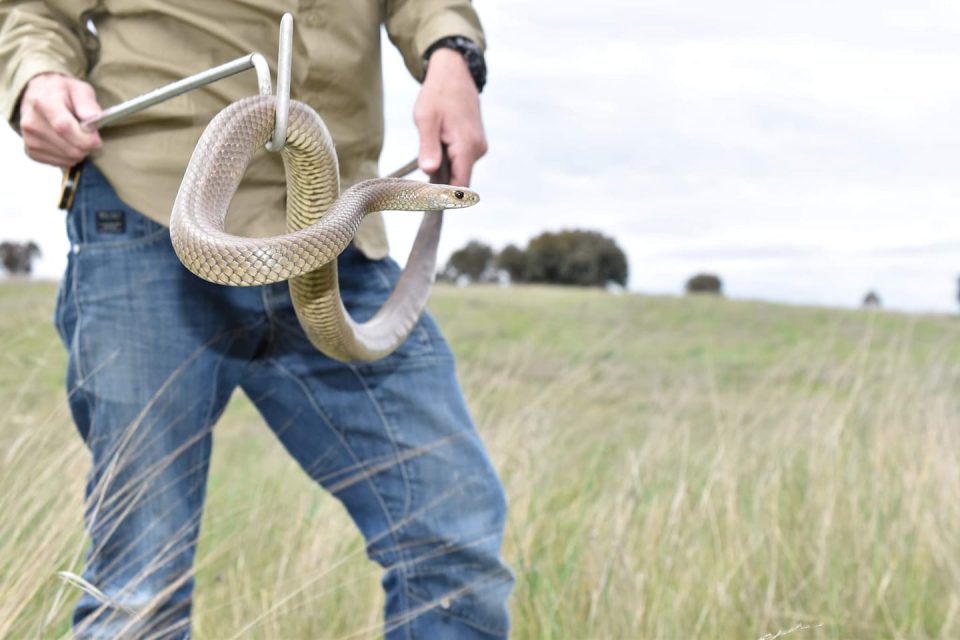
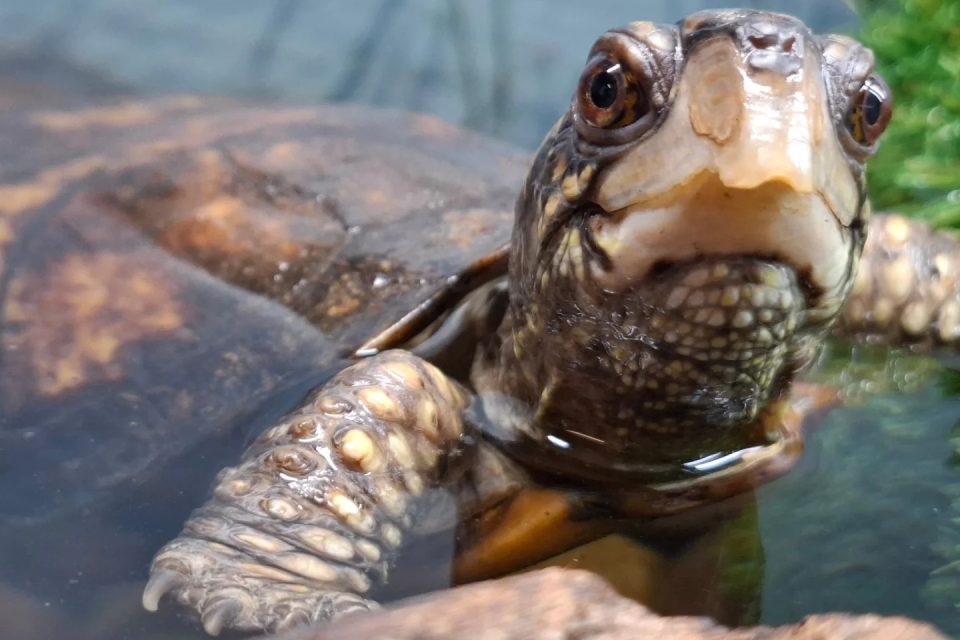

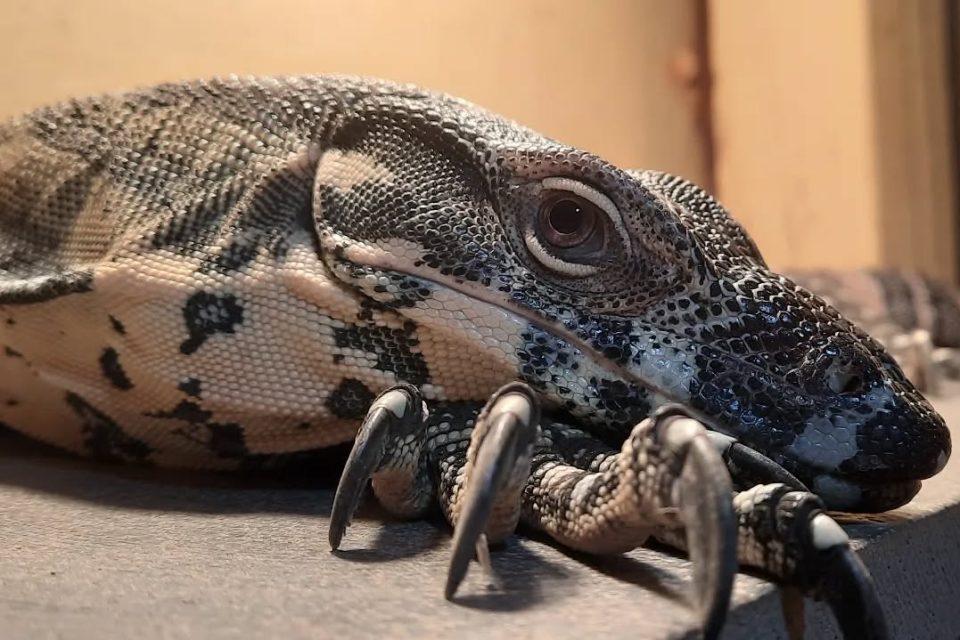
Reptile care is very involved, especially in Canberra’s cool climate. Creating enclosures that mirror residents’ natural habitat is key for their health, happiness and breeding efforts, so a lot of work goes into each design.
“I don’t think everyone realises that proper reptile care means much more than offering food, water and a heat lamp,” Luke says.
“Every single one of our animals needs proper, personalised nutrition and a variety of enrichment activities to keep them engaged.”
Enclosures are tailored to each species for the right temperature, humidity, type and level of light, foliage, hardscaping, places to rest and sunbake. The list goes on …
To those who get a little squeamish around the zoo’s reptile enclosures, Luke suggests chatting with a keeper to find out more about individual animals.
“Don’t let a fear of the unknown hold you back, just give them a go,” he says.
“Every species is unique and surprising in its own way. Find out more about them, and you may just fall in love with reptiles like I have.”
The National Zoo and Aquarium is working hard to support them across all areas of conservation, including breeding, public education, habitat protection, and more.
“We do have a critically endangered reptile coming to the zoo very soon, which is incredibly exciting,” Luke says.
“Keep an eye out on our socials for its arrival and make sure you come say hello once it’s settled.”
For more information, visit the National Zoo and Aquarium.











